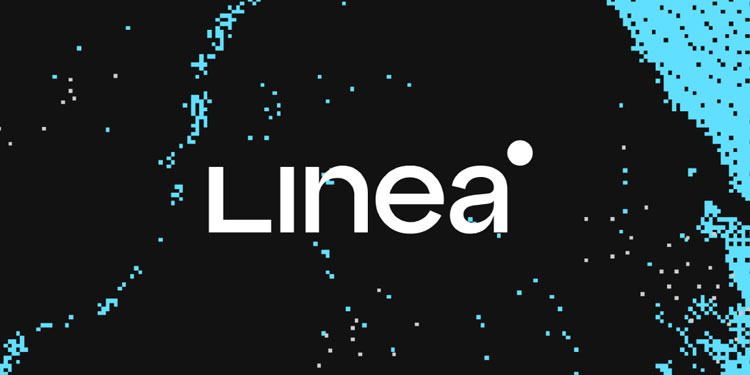
The main goal of Linea is to enhance and expand the Ethereum blockchain by transferring the processing of transactions from the Ethereum mainnet to Layer 2, with the aim of achieving optimization and scalability. The proposed approach involves dividing the execution of transactions, settlements, and state handling into distinct modular blocks within Layer 2. Afterwards, cryptographic proofs that verify the accurate execution of the process are generated and publicly shared on Ethereum’s Layer 1.
Franklin Delehelle Unveils Technical Underpinnings of Linea at ETHCC Paris
Linea is presently classified as a Type 3 ZK roll-up solution. However, their future plans involve transitioning to Type 2, a move that would guarantee compatibility with Ethereum’s mainnet. This transition would allow Linea to demonstrate the integrity of Ethereum’s API and streamline gas calculations between Layer 2 and Layer 1. The development and implementation of the ZK Virtual Machine (ZKVM) for Linea pose challenges due to the intricate nature of Ethereum’s EVM system. However, Linea’s platform offers cost-effective transactions and improved throughput, resulting in decreased network congestion. In addition, Linea guarantees compatibility with pre-existing code written in Solidity or other programming languages, thereby simplifying the development process for developers.
Olivier Begassat, a seasoned researcher specializing in qualitative and quantitative methods, provided an in-depth analysis of Linea’s arithmetization approach, which encompasses the incorporation of constraints and the generation of trace data. Constraints are mathematical equations that represent the execution of the Ethereum Virtual Machine (EVM). On the other hand, traces are extensive matrices utilized for cryptographic proofs. Linea employs MiMC hash functions and a sparse Merkle tree to represent the state. The Prover is a sophisticated component that generates concise cryptographic proofs. Linea utilizes the Vortex proving system, incorporating reduction and compression steps, to effectively manage extensive traces. This approach ensures that the proofs remain compatible with the Ethereum mainnet, facilitating their verification and subsequent publication.
In summary, Linea is ConsenSys’ Level 2 ZK roll-up solution that aims to enhance the scalability of Ethereum. Linea’s objective is to enhance the efficiency and cost-effectiveness of transactions on the Ethereum blockchain by implementing a meticulously coordinated strategy that encompasses arithmetization, state management, and proof production. In the Web3 industry, developers have been diligently working towards enhancing the scalability of the Ethereum blockchain. One of the promising solutions currently being developed is Linea. Franklin Delehelle, a Research Engineer at ConsenSys, delivered a comprehensive presentation on Linea, an Ethereum Level 2 ZK roll-up solution, during the ETHCC Paris event.
The main goal of Linea is to enhance and expand the Ethereum blockchain by transferring the processing of transactions from the Ethereum mainnet to Layer 2, with the aim of achieving optimization and scalability. The proposed approach involves dividing the execution of transactions, settlements, and state handling into distinct modular blocks within Layer 2. Afterwards, cryptographic proofs that verify the accurate execution of the process are generated and publicly shared on Ethereum’s Layer 1. Linea is presently classified as a Type 3 ZK roll-up solution. However, their future plans involve transitioning to Type 2, a move that would guarantee compatibility with Ethereum’s mainnet. This transition would allow Linea to demonstrate the integrity of Ethereum’s API and streamline gas calculations between Layer 2 and Layer 1.
The development and implementation of the ZK Virtual Machine (ZKVM) for Linea pose challenges due to the intricate nature of Ethereum’s EVM system. However, Linea’s platform offers cost-effective transactions and improved throughput, resulting in decreased network congestion. In addition, Linea guarantees compatibility with pre-existing code written in Solidity or other programming languages, thereby simplifying the development process for developers. Olivier Begassat, a seasoned researcher specializing in qualitative and quantitative methods, provided an in-depth analysis of Linea’s arithmetization approach, which encompasses the incorporation of constraints and the generation of trace data. Constraints are mathematical equations that represent the execution of the Ethereum Virtual Machine (EVM). On the other hand, traces are extensive matrices utilized for cryptographic proofs. Linea employs MiMC hash functions and a sparse Merkle tree to represent the state. The Prover is a sophisticated component that generates concise cryptographic proofs.
Linea utilizes the Vortex proving system, incorporating reduction and compression steps, to effectively manage extensive traces. This approach ensures that the proofs remain compatible with the Ethereum mainnet, facilitating their verification and subsequent publication. In summary, Linea is ConsenSys’ Level 2 ZK roll-up solution that aims to enhance the scalability of Ethereum. Linea’s objective is to enhance the efficiency and cost-effectiveness of transactions on the Ethereum blockchain by implementing a meticulously coordinated strategy that encompasses arithmetization, state management, and proof production.